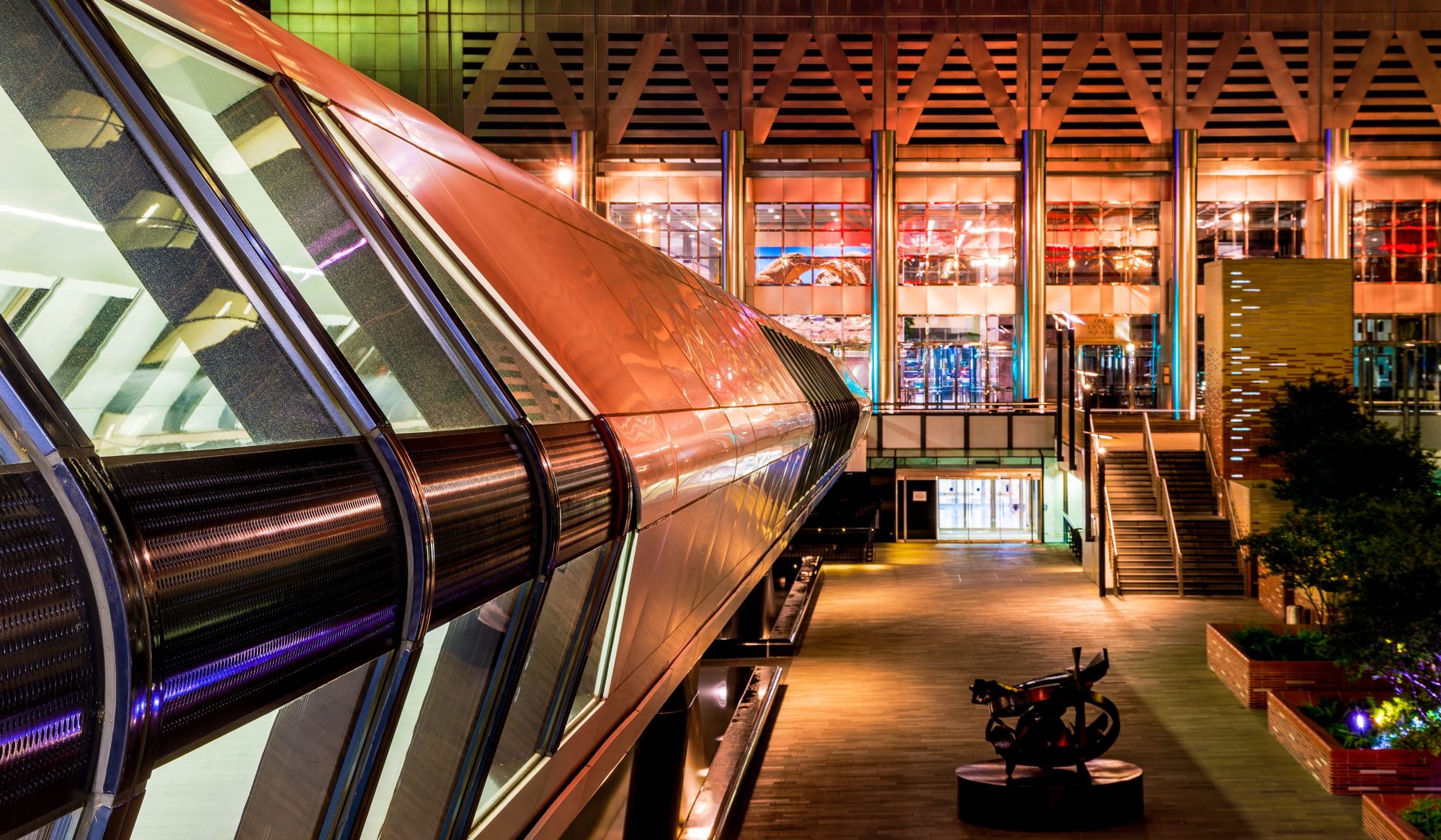How a 1938 diesel coaster is being reborn in Kent as a venue for the arts in east London’s docks
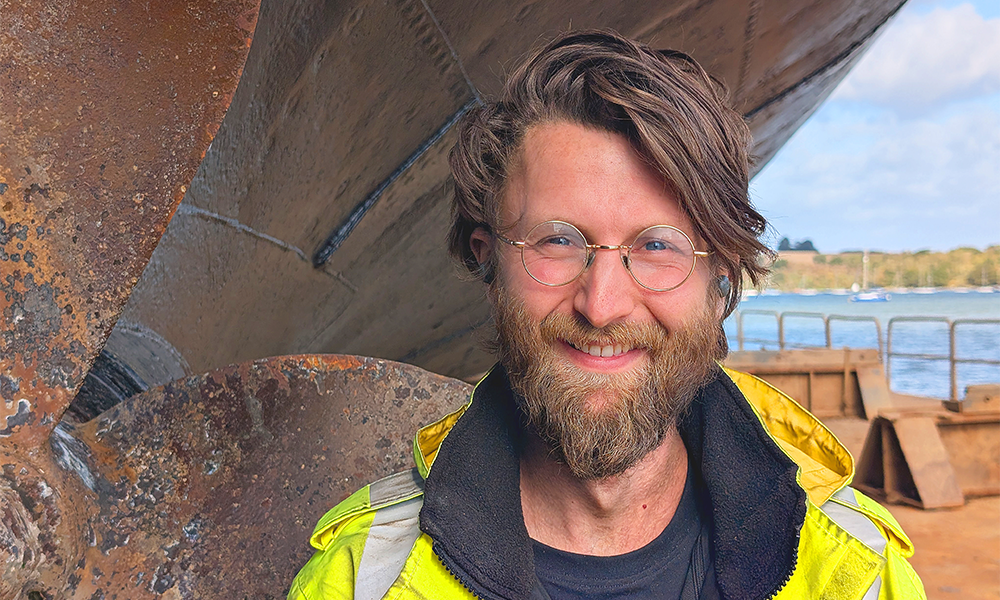
Subscribe to our free Wharf Whispers newsletter here
“What’s incredible here is just how the guys view steel – as something completely fluid,” said Inigo Lapwood.
“When we brought the boat in, they just cut the two stairways we use for access off the pontoon and welded them back on in the right position.”
We’re sat atop the crusty, rusted panels of a vast barge looking out over the River Medway at Stick-Mig Welding in Chatham Docks, Kent.
Above us, resting on the steel – her keel snugly held in place by sacrificial lumps of wood – rise the curves of Artship.
The yard is rich in oxidised metal, but this is no scrapheap.
As we walk through, the searing white light of fabrication and the pop and hiss of melting steel cut the air.
This is a place where things are made and repaired, where function is preserved and created.
Artship herself is in for repairs on her way to the next chapter of her life afloat.
She’s set to join up with Theatreship on the Isle Of Dogs to form a multi-vessel floating arts centre.
But before she can carry a cargo of culture, she needs a bit of work doing – spearheaded by Inigo as founding director of the project.
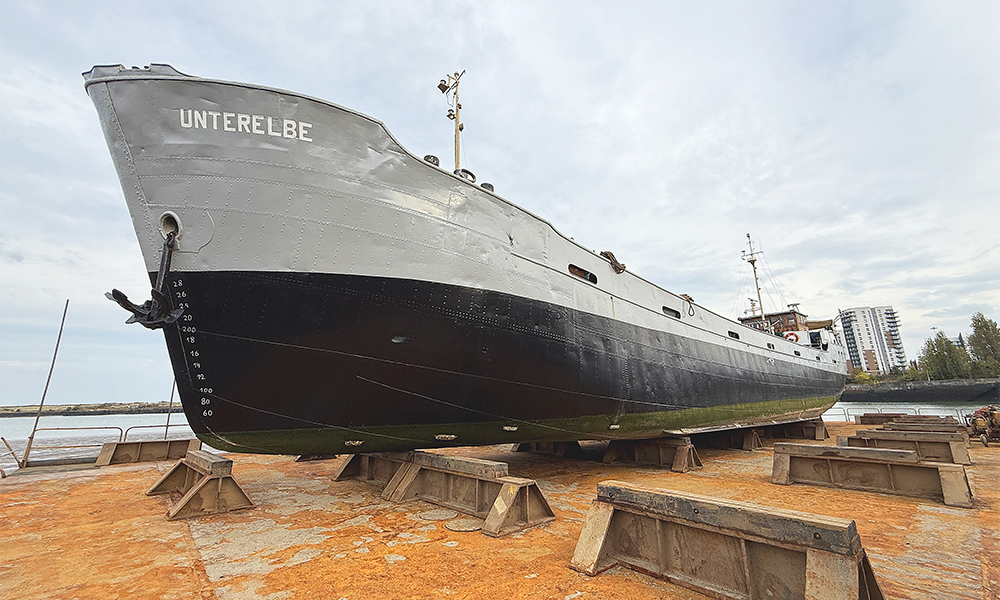
creating Artship in a piece of maritime history
“We’re finishing all the structural work necessary in dry dock,” he said.
“This is actually one of the last places where you can get this kind of work done.
“Historically, Chatham was where all of the great sailing ships were built in the 1800s and we’re really lucky that those skills have been handed down.
“With Artship, we’ve had to cut sections out of the hull and replate them, we’ve had to make repairs to the rest of the machinery onboard and we’re making her suitable for public access.
“Unsurprisingly, a ship designed to carry 500 tonnes of coal isn’t immediately suitable for welcoming hundreds of people.
“However, we want to keep her as honest as possible with the fabric of the ship present and on-show.
“Inside, we have a big space that isn’t really on a human scale so we’re really excited that it presents us with an opportunity for large installations, exhibitions and music events.
“We can do a lot of really interesting things.”
Artship’s keel was laid in 1938.
She’s one of the first diesel coasters – a type of vessel that came to dominate short-sea shipping around Europe through the Second World War and the first half of the 20th century.
There are only a handful left intact.
At the peak of their popularity, there were more than 1,000 similar vessels in use and the class would once have been a familiar sight in the Thames and across Docklands.
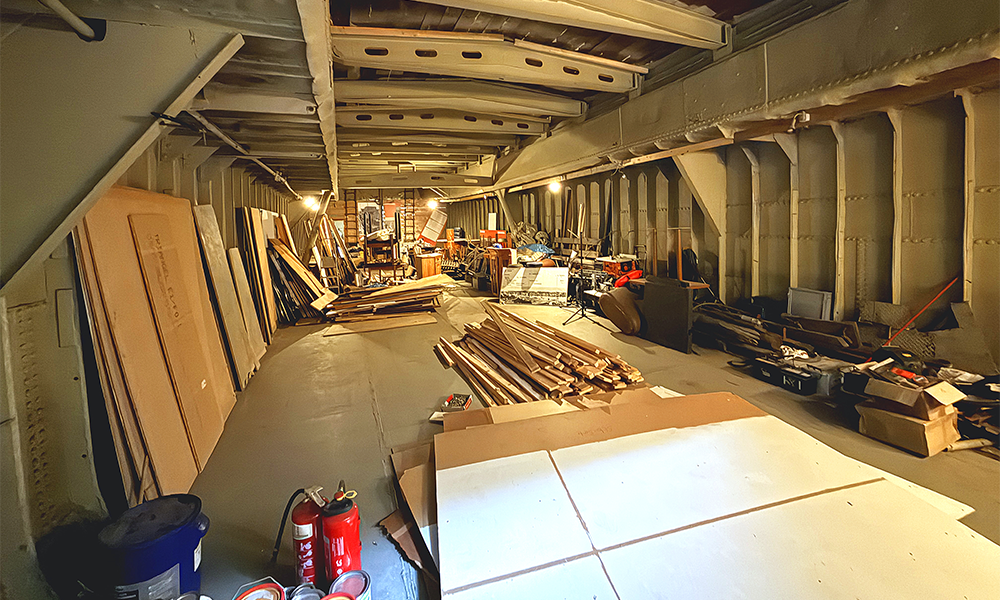
a cargo of culture
“We’re going to be filled with a cargo of arts when we arrive at West India Docks,” said Inigo.
“It’s really building on what we’ve been doing with Theatreship. Just as goods once came to the area from all over the world, our ships can provide somewhere for artists to deliver and unload their ideas today.
“Just before the very first skyscrapers went up in Canary Wharf, the last cargo ships left the docks. Now we’re bringing a second one back.”
Artship’s journey to get to east London has already been an eventful one.
Inigo said: “We found her on the wrong side of Germany, so we had to take her around the Baltic, along the Kiel Canal and across the North Sea.
“We brought her over in July last year and it was quite an undertaking – to get a 90-year-old boat with original machinery working well enough to undertake that kind of trip safely.
“In the end, it took us about two weeks to sail over and we ran into a couple of issues along the way.
“We were about 30 hours into the North Sea, it was around 4am and our second engineer woke me up to tell me she thought the oil pressure was a bit high, but that everything was fine.
“It wasn’t. We actually had a leak in the engine that meant the coolant water was getting into the bottom of the oil sump, producing what amounted to a horrible vinaigrette.
“In that situation, the bearings get starved of oil and, if you don’t spot it, everything overheats.
“Fortunately, we’d had a similar problem with the engine and noticed what was happening so we took a sharp turn and headed for shore as fast as we could.
“However, we ran out of time and had to drop anchor and try and repair the engine at sea.
“It’s a lovely old piece of machinery probably dating from the 1950s and our plan was always to keep it going as long as possible.
“The repair took me almost 36 hours and it nearly killed me – I’m not very good when I don’t get enough sleep and, by around hour 30, I’d forgotten the word for bolt.
“We were working against the clock too because we knew there was a force seven gale blowing in.
“If that had hit us, unballasted and with no power in the engine, the anchors would not have held and we might well have ended up on a beach in northern Europe somewhere – not at all the planned location for a new arts centre.
“We were very lucky to have a brilliant skipper on board, however, who was really experienced.
“After we stopped the engine to repair it, he went straight off for a nap, which was wise because at hour 30 there was someone just waking up fresh to steer the boat.”
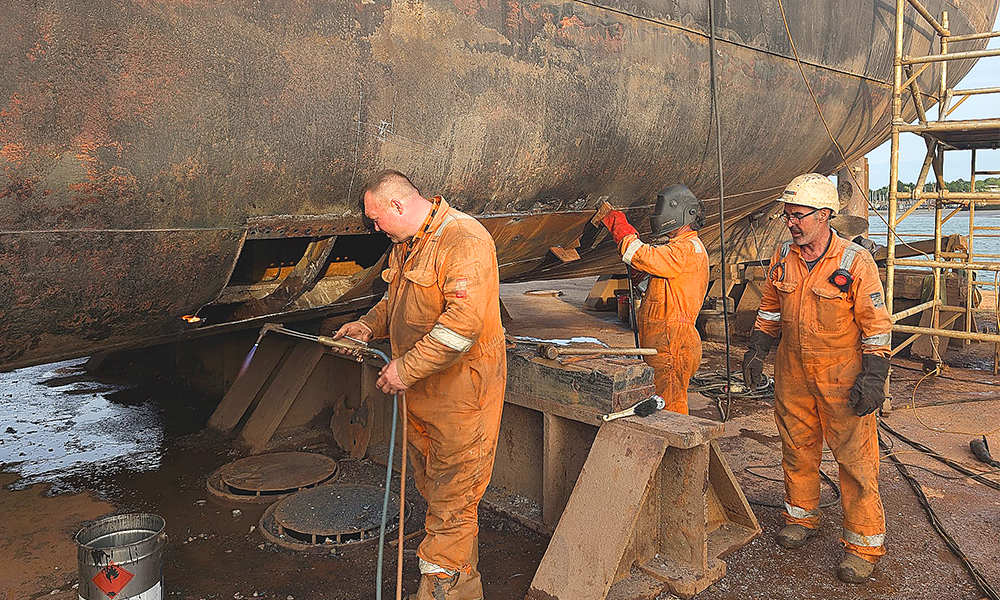
bringing Artship to east London
Fortunately, Inigo and the crew had prepared well, including custom-making tools to service the ageing engine – a piece of foresight that made their North Sea repair possible.
The plan is now to complete works down in Kent, before sailing Artship up the Thames to her new home.
“I hope to bring her to Canary Wharf by December and I’ll be a happy man if I can have my Christmas dinner on the ship,” said Inigo, who typically lives on board the ships he’s restoring.
“There will be stuff to do, but we want to get her back into the docks, even as a living artefact.
“It will be the first time for 50 years that a cargo ship like this has been in the docks that were built for them.
“Then we want to open up the space as quickly as possible.
“We’re working on a really exciting programme to get people on board.
“I’m really pleased with how Theatreship has been received.
“It’s a difficult time for independent venues – we’re a not-for-profit organisation, completely independent and are not supported by investors.
“A third of independent music venues have shut in the last three years, so we’re perpetually grateful that we are able to be open.
“We also do a lot of our events completely free because we believe audiences shouldn’t always have to bear the cost of culture.
“We’ll always try to get funding to make sure we’re not excluding people financially.
“The result of that has been the creation of a really rich community – it’s done what we hoped in bringing people together from all over the place.
“We’ve had multiple film seasons in partnership with the BFI and all sorts of musical events.
“One of the things we love doing with our cinema events is having an interval so people have the opportunity to talk to one another.
“You can end up seeing a work differently as a result of those interactions and that’s creating a greater work of art.
“Our bar is open whether we have a show on or not and we encourage people to use it as a social space.
“One of the reasons east London is as interesting as it is stems from individuals and families coming here from all over the world, staying and sharing the city.
“Amazing things emerge from that.”
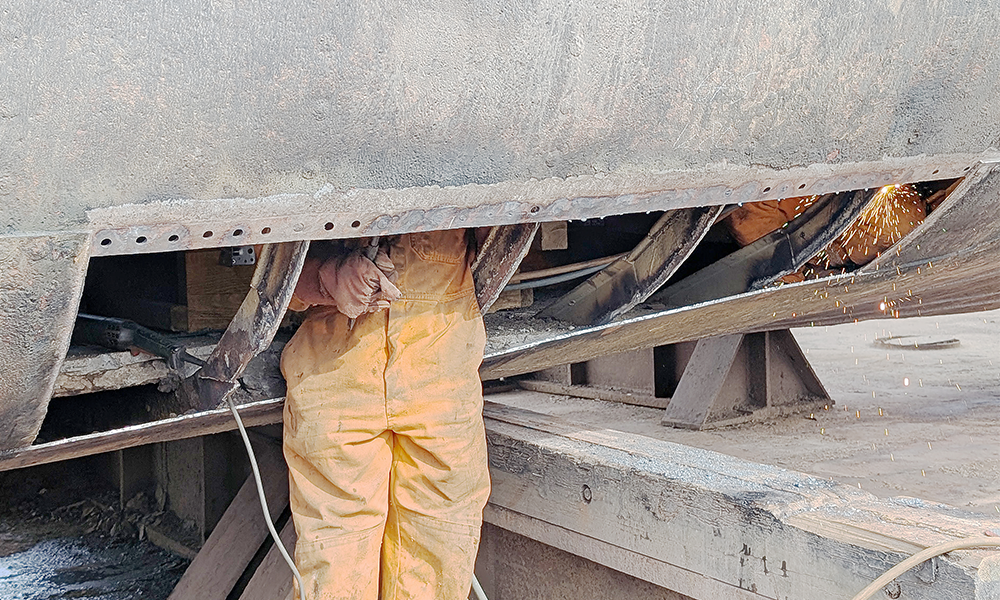
key details: Artship
Artship will hopefully arrive in east London later this year with opening expected in 2026.
Full details of Theatreship’s programme can be found here.
Read more: Amazing Grace set to open second location in Canary Wharf
